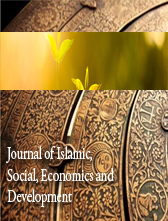COMPARATIVE STUDIES IN UNDERSTANDING MAJALAH AHKAM JOHOR TEXT AND THE IMPLEMENTATION OF THE TAWARRUQ FINANCING IN MALAYSIAN ISLAMIC BANKING
Abstract
Tawarruq, as one of the most commonly used financing products by Islamic banks, has attracted much criticism. One of these accusations is that it is used to evade interest. Tawarruq financing, despite being widely used by Islamic banks, has faced criticism for being accused of evading interest and for being misunderstood by the society In this paper, we compare the modern tawarruq guideline with the text of the Majallah ahkam johor and identify its implementation. The Majallah al-Aḥkām al-'Adliyyah, which was part of the legal text of the Ottoman Empire, was introduced in Johor during the reign of Sultan Abdul Hamid II (1876-1908). The book was brought to the Kingdom of Johor in Arabic in 1893 and later translated into Malay (Majalah Ahkam Johor) in 1913 during the reign of Sultan Ibrahim (1895-1959). This book is a legal reference work dealing with matters of Islamic civil law such as contracts of sale and lease and hibah. The use of the Majalah Ahkam Johor encountered obstacles in the courts due to the interference of the British administration in the legal and judicial system of the state. Nevertheless, the Muftis of Johor (1885-1941) played an important role in the economic and social affairs of the state through informative and authoritative arguments. Our methodology is qualitative and specifically includes a content analysis of the Majalah Ahkam Johor manuscripts. Our results show that the implementation of tawarruq needs to disclose more information about product features that are easier for customers to understand in order to avoid misunderstandings. Using terms from the Majallah Ahkam Johor can help improve customer understanding of the product.













